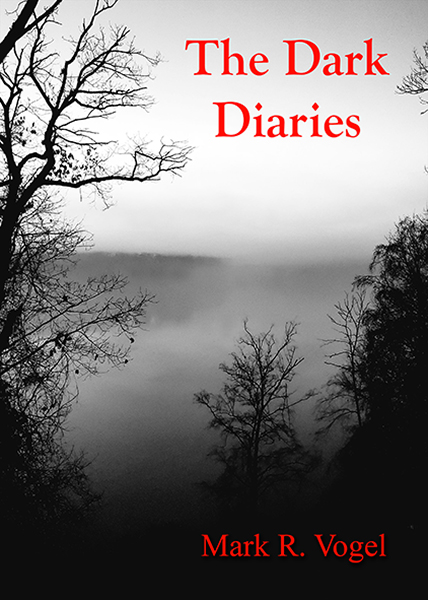The Others is Chilean director Alejandro Amenabar’s first English production, and what a second-viewing head slapper it is. What I mean by this is that after the film’s plot twist is revealed and you go back and rewatch the film, frustrated that you didn’t see it coming, you’ll perpetually slap yourself–not due to the fact that you were “smarter than that” because the red herrings are expertly placed–but because it seems that every other line is a hint of what’s to come. This isn’t to say that Amenabar is didactic by any means. Between whacks, while you’re rubbing your numb forehead, you’ll nod in appreciation at how well synthesized the foreshadowing is in that it flows so naturally that you just have to hand it to the director.
In 1945, Grace Stewart (Nicole Kidman) and her two children, Nicholas and Anne (James Bentley and Alakina Mann respectively), naively await the return of the paterfamilias, Charles (Christopher Eccleston), from his efforts in Second World War. After the estate’s servants leave without warning, three others–Bertha Mills (Fionnula Flanagan), Edmund Tuttle (Eric Sykes), and a mute girl named Lydia (Elaine Cassidy)–appear in their wake. As Grace attempts to raise her children, both of which suffer from Xeroderma Pigmentosum–a rare skin disease which makes them highly susceptible to light, strange presences begin manifesting themselves.
The Others is an unfortunate film for a critic in that there isn’t much that I am permitted to comment upon and not give away the finale. Suffice it to say that fans of M. Night Shyamalan’s work will be able to appreciate Amenabar’s film. However, considering the work bares more than a passing resemblance to Henry James’s Turn of the Screw, the Spanish director’s film is slow by comparison. It is very much an adult horror film in this respect just as Barry Levinson’s Wag the Dog or Michael Mann’s The Insider is an adult drama.
Kidman’s performance as the zealous, anal-retentive mother is outstanding as she brings the character’s more than perturbing traits to the forefront as she effeminately pats her chest while considering her options, all the while weighing them against social decorum and Biblical dictums. To put it bluntly, I am not convinced that the children suffer from XP and that Grace hasn’t merely fabricated the story in order to keep the children under lock and key at all times. Yet Grace is Amenabar’s crux as he refuses to allow his viewer any recourse away from her irritating snobbery, which is symbolized not only in her cloistered wardrobe bought and paid for at Victorian Fashions ’R Us, but is effused via the house itself as its cold, mahogany floors readily absorb what little light is reluctantly permitted through the heavy drapes.
One eyebrow-raising insinuation of note which I am permitted to divulge occurs when Grace finds a photo album for which she cannot account. As she thumbs through its pages, she is befuddled over why all of the people within the pictures’ frames are sleep before Mills explains that Grace is holding a Book of the Dead, that is, a collection of photos of cadavers. When quizzed upon why people would do such a thing, the maid retorts that it was a common nineteenth century belief that by creating such works, people believed that it would permit the deceased’s spirit to continue unabated. Grace then berates what she deems is an illogical superstition. Mills then reminds Grace that people oftentimes resort to seemingly absurd notions during times of grief. What makes this sequence interesting is that the criticism Grace voices becomes ironic given the character’s adamant theological stance, thus, coyly, Amenabar implies that Grace’s Catholicism is likewise ridiculous.
Ironically, it is the figure of Grace which is the film’s character flaw in that she carries us through the movie and, all the while, we feel nothing but irritation for her, even when we are instructed to do otherwise. As a consequence, plot twist in tow, the film fails to hit as soundly as it could have if we were to have been allotted a more empathetic character. Instead, The Others becomes a mere fascinating riddle that–after the second viewing in order to catch the now obvious clues–loses its allure.
Alejandro Amenabar’s The Others is an entertaining foray into adult, period horror which is largely sustained by the acting prowess of Nicole Kidman. What becomes more remarkable than the film itself (especially after the second viewing) is the fact that Amenabar not only directed the feature, he single-handedly wrote the script, scored the film, as well as orchestrated the soundtrack at the tender age of twenty-nine. All-in-all, The Others is a fun film which I cannot help but see as what the script for Tim Burton’s Beetle Juice would have been if directed by James Ivory (give it a second . . . ).
-Egregious Gurnow
- Interview with J.R. Bookwalter - January 22, 2015
- Interview with Andrew J. Rausch - January 22, 2015
- Interview with Rick Popko and Dan West - January 22, 2015
- Interview with Director Stevan Mena (Malevolence) - January 22, 2015
- Interview with Screenwriter Jeffery Reddick (Day of the Dead 2007) - January 22, 2015
- Teleconference interview with Mick Garris (Masters of Horror) - January 22, 2015
- A Day at the Morgue with Corri English (Unrest) - January 22, 2015
- Interview with Writer/Director Nacho Cerda (The Abandoned, Aftermath) - January 22, 2015
- Interview with Actress Thora Birch (Dark Corners, The Hole, American Beauty) - January 22, 2015
- Interview with Actor Jason Behr, Plus Skinwalkers Press Coverage - January 22, 2015


